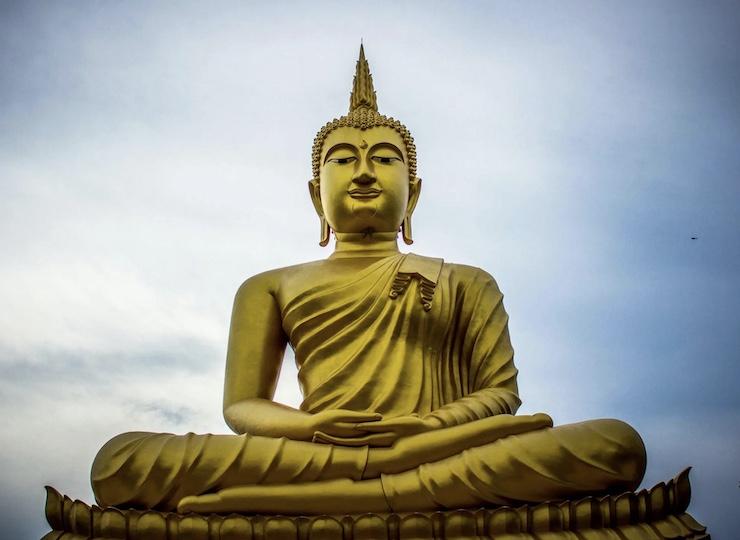Japanese Artist Uses Drones To Share Buddhist Traditions

Considered the cultural center of Japan, Kyoto is home to thousands of religious sites and architectural masterpieces that draw visitors from all over the world. With 1,600 Buddhist temples, Kyoto is also the hub of art dedicated to Buddhism, particularly statue-making. Japanese sculptors take the craft of carving Buddha sculptures very seriously. “There are many rules about the shape of Japanese Buddhist statues,” says Yozan Miura, a 51-year-old sculptor working in Kyoto. “For example, the size of the face and the position of the chest are determined by drawing lines with great precision.” It is an honor to create these statues, a tradition steeped in rituals that are taught to crafters from a young age. Yozan wasn’t always a sculptor. He used to work as a salaryman, a white-collar worker, in the Kansai Region. The stress of the job often led him to seek refuge in the old temples of the surrounding area during his time off.
It was in these temples that Yozan began to appreciate the beauty of Buddha statues, which eventually inspired him to quit his job and become a Buddhist sculptor. He spent 13 years training before opening his own studio in Kyoto. In his studio, with the help of apprentices, Yozan restores old statues and carves custom pieces out of Japanese cypress. While drawing on the traditions of Buddhist statue-making, Yozan has found a unique way to combine these traditions with modern technology, such as drones.
Yozan said that he had always wanted to find a way to express his fondness for Raigō, the Japanese Buddhist belief in the Buddha coming down to escort the soul of the deceased to the heavens. This concept is often depicted in Japanese paintings. “The challenge of expressing this in a three-dimensional way has existed for a long time,” said Yozan. “In the old days, people couldn’t actually fly the Buddha statue in the air. Instead, they decorated the high walls of the hall with Buddha images on clouds to make it look like they were floating in the air.” With drone technology, Yozan has found a way to create a three-dimensional Buddha that can fly, allowing patrons at home or in a temple to honor Raigō.
To get the Buddha drone to work, Yozan had to find a material different from Japanese cypress. The wood would be too heavy for the small drone to lift. He scanned a to-scale wooden Buddha statue and uploaded it to a computer. Next, Yozan used a 3D printer to create accurate, hollow Buddha statues from a lightweight resin. He then covered the statues in lacquer and gold leaf to replicate the look of the Buddha statues found in temples.
Finally, Yozan enlisted the help of Ryuho Ikeguchi, a monk who is also a coder, to program the drone’s flight plans. For Ryuho, the blending of drones with temple activities is a natural progression that keeps modern people engaged with ancient traditions. “Temple culture has been changing for a long time,” Ryuho said. “It’s really a matter of how to create a space that is solemn and easy to worship in while using various new expressions, techniques, and technologies.”
“I thought that if I put the Buddha image on a drone,” Yozan said, “I would be able to show Raigō and the way that people in the past believed deeply, a Buddha image actually floating in the air and coming to welcome you, moving in an unprecedented way.” It is an idea that Ryuho agrees with. He explained how some elderly people now come to the temple to see the drones with Buddha statues, allowing them to truly experience Raigō and giving them a sense of peace in their final days.
Yozan may not have followed the traditional path of many Buddhist sculptors, who hone their craft from a young age. However, it was his experience working as a salaryman, combined with his love of art and devotion to Buddhism, that allowed him to think outside the box, merging drones with an ancient art form. “The idea is to actively incorporate new technology into the traditional methods of carving,” he said, “while respecting the techniques of the past.”
|